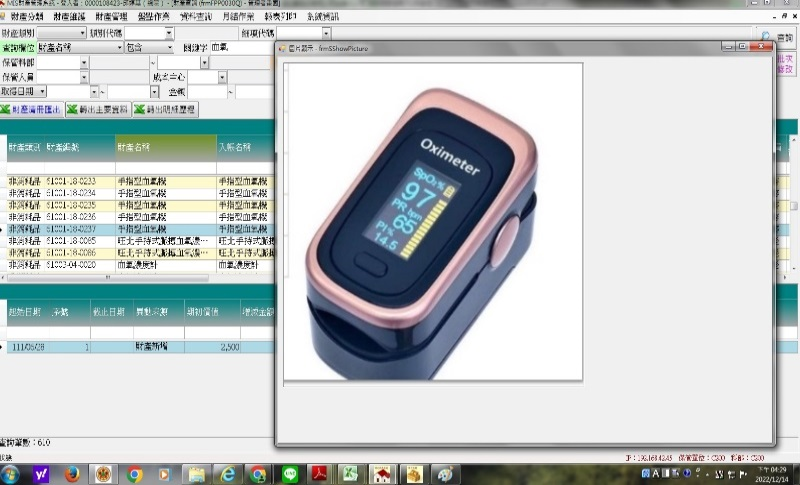An innovative approach for managing smart medical instruments/equipment
Dept. of Material Supply Inventory Section
National Cheng Kung University Hospital manages more than 20 data points of publicly-owned properties including land, buildings, machines, transportation, and other equipment, and medical instruments account for more than 80% of these properties. These publicly-owned properties are all managed pursuant to the relevant regulations. To ensure the effective use, storage, and maintenance of properties such that no waste is generated, the hospital launched a property management information system (MIS) in 2013 to implement the smart management of tens of thousands of instrument and property data points. The shift from a paper-based system to the scientific management of property data has created a new model for managing hospital property.
■Improve management efficiency through data classification:
●The property MIS improves the efficiency of property management because it considerably reduces the time required to file data, organize data, and produce statistics during specific activities, that is, adding, transferring (within or outside the hospital), revaluating (appreciation/depreciation), inventorying, and scrapping properties; calculating the depreciation of fixed assets; and preparing financial statements.
●The big data system contains detailed identification data on each of the properties managed by the hospital. It also allows users to import and view images in preparation for subsequent management and follow-up.
●Inquiries can be made using various search filters, and the unit responsible for managing a property can view its real-time data (e.g., date when a property is received, its accessories, the price at which it was acquired, its transfer history, and whether it has been scrapped). The export function also allows users to perform statistical classification on the basis of data attributes.
■Effective hospital management based on instrument income statistics
To understand the use of a medical instrument and how its use relates to its cost, the property MIS considers the hospital’s payment data in the management of high-cost instruments. For instruments whose acquisition cost exceeds NT$1 million, the ratio of their utilization level to the income that they generate is calculated quarterly and provided to the sales department to improve internal control, optimize instrument utilization, ensure the effective use of medical resources, and provide a basis for the future acquisition of related instruments, thereby enhancing the hospital’s management.

Figure 1. Architecture of property management information system.

Figure 2. Property management information system: image importing and viewing functions.
